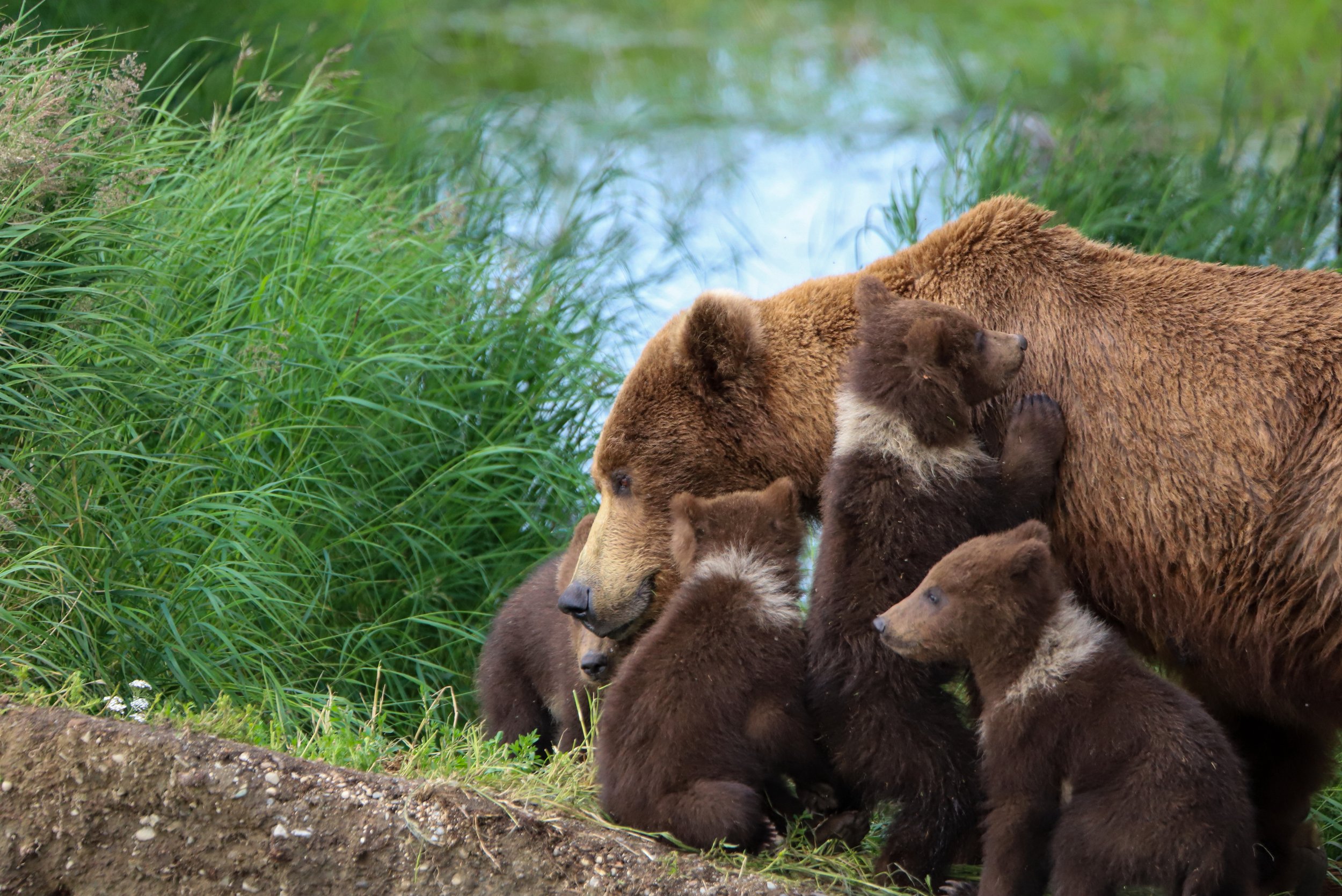
Reproduction
Bears are among the least productive mammals in North America. In theory, a male and female black bear born this year—if they breed as soon as they reach sexual maturity and as often as possible, and if all their offspring survive to do the same—could in the space of ten years have grown to a population of 15 bears (assuming none died). Grizzly bears are even less productive: in 10 years, a male a female born today could grow to a population of only eight. By comparison, a pair of white-tailed deer could produce more than 1,400 descendants in 10 years.
Bears generally live solitary lives, but can be found together during mating season. The average breeding age for female black bears is 3.5 years and for female grizzlies is 4.5 years. Males reach sexual maturity at roughly the same age as their female counterparts. Even though males are capable of breeding at three or four years of age, they rarely have the opportunity to do so because of intense competition from older, bigger males. The biggest bears in the population tend to be the most prolific breeders. Not only are male bears promiscuous, but females often have more than one mating partner.
Breeding season begins in May and lasts until early July, with mating mainly occurring during June. The implantation of the fertilized eggs—called blastocysts—is delayed until the start of denning season. If the female does not attain sufficient body fat or weight during the summer and fall, the embryos will not attach to the uterine wall and subsequently develop into little bears. This photo is of famous Grant Teton Park grizzly bear 399 and her four cubs of the year in 2020.
Cubs are born in the den in January or February. Litter size ranges from one to six, depending on the species and the productivity of the surrounding habitat. Cubs weigh one-tenth as much as human babies and are born blind. Once they have left the womb, they find their way to their mother’s teats where they feed on milk (and grow) until the spring.
Mother bears tend to be protective, strict, sensitive and attentive toward their cubs, raising them to an age where they can survive on their own. Depending on food abundance, mothers (especially grizzlies) may keep their yearlings a second (even a third) year, denning together again and breaking up in the third (or fourth) year. Usually in the third year, a sow will “kick off” her cubs to make them independent and so she can mate again. Mothers will tenaciously reject their offspring if they try to return, but sometimes they follow for a few days. Alone and vulnerable, siblings will often stay together for some time after their mother leaves them, eating and sleeping side-by-side, and even denning together.
Sub-adult females tend to establish home ranges within or overlapping their mother’s home range. Sub-adult males, on the other hand, are usually discouraged from staying and must travel often large distances to establish a home range.
During spring when roaming males begin courting reproductive aged females, mothers are often forced to break up the family unit, in order to protect their cubs from infanticide. A male and female bear may spend days courting each other before mating. Initially, a male suitor trails his prospective mate from a distance, smelling her daybeds and sniffing her urine to analyze how receptive she is. At first, she may run away. But in time she allows him closer and closer. If she is afraid—males are bigger and potentially dangerous—she may charge him or swat him with her paw, especially if it is her first time. Males rarely retaliate, but bide their time.
Although the female is in heat for a number of weeks, she will only allow a male to mate with her when she is most receptive, during the three to five day period in the middle of her estrus cycle. During mating, the male and female become almost inseparable, mating repeatedly in the ensuing days. Estrus females are frequently pursued by more than one male. If another male arrives during the courting ritual, the males may challenge one another for dominance or they may fight if they appear evenly matched.
Infanticide among bears is natural but rare. Boars that encounter sows with cubs will sometimes kill the cubs to initiate estrus and breeding. Sows, especially grizzlies, are very protective of their young and will fight back fiercely. The male’s responsibility ends with copulation; they do not participate in the rearing of offspring.
